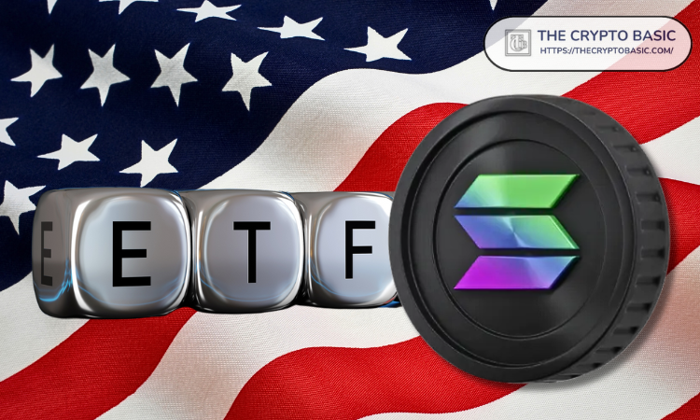Hamas cryptocurrency fundraising has emerged as a notable concern amid growing scrutiny of how militant organizations leverage digital currencies for financial support. Recently, the US Justice Department reported the seizure of over $200,000 in cryptocurrency intended for Hamas, representing a small fraction of a larger issue involving illicit funding mechanisms. This seizure highlights the role of cryptocurrency in terrorism financing, particularly as Hamas has been linked to laundering over $1.5 million through various virtual exchanges. In response, the US Treasury has implemented sanctions aimed at disruptors of such financial networks, especially significant players like Binance, which faces allegations of facilitating these transactions. As authorities tighten regulations to combat Hamas funding, the intersection of cryptocurrency and national security continues to raise critical questions about oversight and enforcement.
The fundraising efforts of Hamas through digital currencies have brought attention to the broader implications of cryptocurrency in financing extremist organizations. These initiatives often involve sophisticated networks that utilize advanced technologies to bypass traditional financial systems, thus complicating the enforcement of laws aimed at curbing terrorism financing. Recent government actions, such as the targeted seizure of assets and sanctions by the US Treasury, underscore the urgency of addressing these challenges. Legal disputes, including the Binance lawsuit, further illustrate the difficulty in regulating such dynamic and evolving markets. As discussions about cryptocurrency regulation progress, the need for comprehensive strategies to prevent the misuse of digital assets for funding terrorism becomes increasingly apparent.
Hamas Cryptocurrency Fundraising: An Emerging Threat
In recent years, Hamas cryptocurrency fundraising has become a pressing concern for international authorities, especially given the group’s ability to leverage digital currencies for financial support. The US Justice Department’s seizure of over $200,000 in cryptocurrency linked to Hamas fundraising underscores this growing threat, illustrating the organization’s efforts to bypass traditional banking systems. The DOJ’s report revealed that the seized funds were allegedly laundered through virtual currency exchanges, highlighting the need for enhanced scrutiny of cryptocurrency transactions to restrict access to financial resources that could fuel terrorism.
Hamas has been actively soliciting cryptocurrency donations since at least 2019, tapping into the anonymity and decentralized nature of these digital assets. However, the effectiveness and scale of such fundraising efforts remain under debate. Analysts argue that while cryptocurrency offers a convenient means of transaction, most terrorist financing still relies on conventional fiat currencies, indicating a potential gap in the regulatory framework governing digital assets. This scenario calls for a comprehensive assessment of the risks associated with cryptocurrency fundraising by militant groups.
US Treasury Sanctions and Their Impact on Hamas Funding
The US Treasury’s strategic sanctions against Hamas cryptocurrency networks highlight a significant step in combatting terrorism financing. In January 2024, the Treasury’s Office of Foreign Assets Control, in collaboration with international partners from the United Kingdom and Australia, imposed sanctions targeting facilitators of cryptocurrency transactions for Hamas. These actions were built upon earlier sanctions from October 2023, which aimed to restrict the financial capabilities of terrorist organizations utilizing emerging digital platforms.
By curbing cryptocurrency fundraising avenues, the US Treasury aims to dismantle the financial networks that support Hamas and similar organizations. The challenge lies in the evolving nature of cryptocurrency transactions, where terrorists can easily initialize accounts on different platforms, such as Binance, to enact their schemes. As the international community escalates its efforts to mitigate terrorism financing, the focus is shifting toward creating comprehensive regulations that monitor and secure cryptocurrency handling, thereby limiting the risks associated with illicit transactions.
Legal Implications of Cryptocurrency in Terrorism Financing
The intersection of cryptocurrency and terrorism financing has given rise to legal scrutiny, with high-profile lawsuits illustrating the potential liability platforms like Binance may face. In January 2024, families of victims from a Hamas attack on Israel filed a lawsuit against Binance, alleging that the exchange contributed to terrorist funding. This legal action underlines the conflicts between cryptocurrency exchanges and regulatory bodies, as the blockchain technology that enables digital asset trading becomes increasingly challenged by its association with illegal financial activities.
As regulatory focus sharpens, exchanges may be mandated to implement stricter Anti-Money Laundering (AML) controls to prevent their platforms from being exploited for terrorism financing. The high-profile settlement of Binance with the DOJ for $4.3 billion reflects the dire need for compliance and the potential consequences of neglecting regulatory obligations. As the legal landscape continues to evolve, cryptocurrency providers must heighten efforts to ensure transparency and accountability in their operations to avoid becoming enablers of terrorism funding.
The Role of Virtual Currency in Terrorism Financing
Virtual currency has become an increasingly used instrument for financing terrorism, despite ongoing efforts by governments to monitor and regulate its usage. The recent $200,000 seizure by the DOJ exemplifies the potential for digital assets to be funneled into terrorist groups like Hamas through complex laundering methods. This incident not only draws attention to the dangers posed by virtual currency but also raises questions regarding the adequacy of existing regulations in deterring such activities.
Analysts note that while the overall incidence of cryptocurrency usage in terrorism financing is relatively small compared to traditional methods, the growth of digital assets necessitates a proactive regulatory approach. As cryptocurrency technology evolves, improper usage could escalate if authorities fail to implement sufficient controls. Thus, ongoing discussions about increasing regulation, enforcing compliance standards, and conducting thorough investigations into cryptocurrency transactions are essential to thwart potential threats from terrorist organizations leveraging these innovative financial technologies.
Binance Lawsuit: Implications for Cryptocurrency Regulators
The lawsuit against Binance for allegedly facilitating contributions to Hamas raises significant concerns for cryptocurrency regulators worldwide. The claims state that the exchange’s lax controls allowed Hamas to utilize its platform for funding, potentially creating a precedent for future legal actions against other cryptocurrency providers. As global scrutiny of terrorist financing intensifies, the outcomes of such cases could set a benchmark for how jurisdictions approach the regulation of cryptocurrency exchanges and their responsibilities in preventing illicit activities.
Furthermore, the ongoing battles between cryptocurrency firms and governmental organizations over compliance demonstrate the urgent need for a cohesive regulatory framework. The situation reflects a critical juncture where law enforcement must collaborate with cryptocurrency platforms to develop better practices and protocols that fortify the industry against exploitation for terrorism-related activities. Following the Binance case, both regulators and operators must reassess their strategies and align them with prevailing legal standards to ensure the integrity of the financial system.
Effectiveness of Cryptocurrency as a Fundraising Tool for Terrorists
The effectiveness of cryptocurrency as a fundraising tool for terrorists like Hamas is a complex subject plagued by uncertainty. On one hand, the decentralized nature of digital currencies offers potential anonymity and a lower transaction cost compared to conventional banking. On the other hand, recent reports indicate that despite efforts to harness cryptocurrency, terrorist financing predominantly relies on traditional money laundering channels and fiat-based infrastructures.
A Chainalysis report from 2023 indicated that terrorism financing constitutes only a small portion of overall cryptocurrency transactions, emphasizing that the majority of financial operations in the illicit sector still prefer using established methods. This indicates a potential misallocation of resources in focusing primarily on cryptocurrency as a central threat. Thus, enhancing understanding of how these organizations operate and their actual impact on the digital asset ecosystem could lead to more effective counter-terrorism strategies.
Challenges of Regulating Cryptocurrency Exchanges
One of the main challenges in regulating cryptocurrency exchanges is the rapid pace at which the technology evolves, often outstripping existing legal frameworks. Exchanges like Binance have faced extensive scrutiny from the US Treasury and other governments, particularly concerning their compliance with Anti-Money Laundering laws. With the dynamic nature of cryptocurrencies, creating comprehensive regulations that keep pace with technological advancements is crucial to prevent misuse by groups like Hamas.
Moreover, the difficulty in tracing transactions through blockchain technology adds another layer of complexity. Authorities are striving to establish more robust surveillance mechanisms to monitor cryptocurrency movements, employing various tools and technologies to track illicit activities. Given these challenges, collaboration between regulatory agencies and cryptocurrency exchanges is vital to develop effective compliance measures that not only adhere to legal obligations but also preclude terrorist organizations from exploiting the system.
Future Trends in Cryptocurrency and Terrorism Financing
The future trends in cryptocurrency’s role in terrorism financing are influenced by ongoing developments in regulatory frameworks and technological advancements. As governments and regulatory bodies become more attuned to the methods employed by terrorist organizations, the probability of stricter regulations and oversight of cryptocurrency exchanges increases. This shift could fundamentally alter how funds are transferred across borders, creating a more challenging environment for groups like Hamas that rely on fundraising through digital assets.
Furthermore, advancements in blockchain analytics and law enforcement techniques could enable authorities to detect illicit funding mechanisms more effectively. This increased monitoring will likely deter potential terrorism financing activities within the cryptocurrency space, leading to a decrease in solicitation from illegal groups. As the landscape evolves, international cooperation will be critical in ensuring that regulations are not only uniform but also adaptive to the constant transformations within the cryptocurrency ecosystem.
The Importance of Blockchain Transparency in Combating Terrorism
Blockchain technology’s inherent transparency could play a pivotal role in mitigating terrorism financing risks. The traceability of cryptocurrency transactions offers unparalleled insight into the movement of funds, enabling authorities to identify and intercept payments linked to terrorist activities. Utilizing advanced analytics and forensic tools, regulators can monitor and track suspicious transactions, ultimately enhancing the security of the financial system.
Capitalizing on blockchain’s transparency requires collaboration between governments, cryptocurrency exchanges, and technology stakeholders to establish standardized practices allowing for diligent reporting of suspicious activities. By fostering a culture of compliance and responsibility within the cryptocurrency industry, stakeholders can significantly reduce the likelihood of terrorist organizations exploiting digital assets for funding. Establishing such frameworks is critical in ensuring that the integrity of blockchain technology is maintained while protecting the broader financial ecosystem from malicious use.
Frequently Asked Questions
What is the significance of Hamas cryptocurrency fundraising in relation to US Treasury sanctions?
Hamas cryptocurrency fundraising has significant implications due to the US Treasury sanctions aimed at curbing finances to terrorist organizations. The sanctions identify and target networks facilitating cryptocurrency transactions associated with Hamas, specifically since a major crackdown in October 2023. This has led to the seizure of funds meant for Hamas, highlighting the government’s effort to prevent terrorism financing through digital assets.
How did the US Justice Department’s seizure impact Hamas funding efforts?
The US Justice Department’s seizure of over $200,000 linked to Hamas cryptocurrency fundraising has severely impacted the group’s financial operations. The seized funds were intended to support terrorist activities and were part of a larger network that laundered approximately $1.5 million in digital assets. This action signifies the DOJ’s commitment to disrupting terrorism financing and underlines the risks associated with cryptocurrencies for such organizations.
What are the legal implications of the Binance lawsuit related to Hamas funding?
The Binance lawsuit is a crucial case related to Hamas funding as it claims that the cryptocurrency exchange provided substantial assistance to terrorists. Filed by families of victims from a Hamas attack, the case argues that Binance’s alleged deficiencies in Anti-Money Laundering controls have facilitated terrorism financing. This lawsuit represents a growing concern around the role of cryptocurrency exchanges in enabling such activities, especially following US Treasury sanctions.
What role does cryptocurrency seizure play in combating Hamas terrorism financing?
Cryptocurrency seizure plays a vital role in combating Hamas terrorism financing by cutting off funding sources critical to their operations. The US government, through recent seizures by the DOJ, aims to disrupt the flow of digital assets linked to terrorist activities. By targeting the wallets and exchanges used by Hamas, authorities hope to deter future fundraising efforts and enforce stricter regulations on cryptocurrency platforms.
How has Hamas utilized cryptocurrency for fundraising since 2019?
Hamas has utilized cryptocurrency for fundraising since at least 2019, seeking donations in digital assets to support its activities. However, the effectiveness of these fundraising efforts has been questioned, with a December 2024 report indicating that while Hamas has tried leveraging cryptocurrencies, traditional fiat methods still dominate its financing strategies. The ongoing scrutiny from US officials emphasizes the need for regulatory measures to monitor such activities.
What is the relationship between Binance and Hamas funding allegations?
The relationship between Binance and Hamas funding allegations stems from legal claims that the exchange facilitated transactions benefiting terrorist activities. Following the filing of a lawsuit by victims’ families, concerns have arisen about Binance’s role and compliance with regulations, particularly in light of its previous settlement with the DOJ for $4.3 billion. This situation sheds light on the broader issues of cryptocurrency exchanges and their obligations to prevent terrorism financing.
Why is there increasing scrutiny of cryptocurrency exchanges in relation to terrorism financing?
Increasing scrutiny of cryptocurrency exchanges regarding terrorism financing is due to concerns that these platforms can inadvertently facilitate illegal activities, like Hamas cryptocurrency fundraising. With reports detailing how terrorist organizations have sought to exploit digital currencies, regulatory bodies are questioning the effectiveness of existing Anti-Money Laundering measures. This scrutiny intersects with significant legal actions, such as the Binance lawsuit, underscoring the need for enhanced oversight.
| Key Point | Details |
|---|---|
| DOJ Cryptocurrency Seizure | The US Justice Department seized over $200,000 in cryptocurrency intended to support Hamas, as announced on March 27. |
| Funds Laundered | Traced cryptocurrency valued at $201,400 has been linked to laundering over $1.5 million in digital assets since October 2024. |
| Sanctions Announced | In January 2024, the US Treasury and allies announced sanctions against networks facilitating cryptocurrency transactions for Hamas. |
| Lawsuit Against Binance | Three victim families filed a lawsuit against Binance claiming the exchange aided terrorists, while Binance denies any special relationship with Hamas. |
| Regulatory Concerns | The rise in cryptocurrency fundraising by Hamas has led to discussions on whether more regulation is needed in the industry. |
Summary
Hamas cryptocurrency fundraising has emerged as a significant concern for authorities following the seizure of substantial sums intended for the group’s operations. Recent actions from the US Justice Department and Treasury reflect ongoing efforts to combat the misuse of cryptocurrencies by terrorist organizations. The dual pressures of legal challenges against exchanges like Binance and increasing scrutiny of crypto transactions underscore the urgent need for clear regulations to mitigate these risks.
Hamas cryptocurrency fundraising has recently come into the spotlight following a significant seizure by the US Justice Department, which confiscated over $200,000 in digital assets intended to support the militant group. This incident highlights the ongoing challenges of combating terrorism financing in the digital age, especially as Hamas has used cryptocurrencies to launder more than $1.5 million since late 2023. With US Treasury sanctions targeting networks facilitating these transactions, the implications for cryptocurrency exchanges are profound, particularly in light of recent lawsuits against platforms like Binance. The scrutiny over these exchanges for their roles in potential terrorism financing raises critical questions about how well they are equipped to prevent such illicit activities. As governments worldwide increase their oversight of cryptocurrency operations, the debate surrounding the intersection of digital currencies and terrorism financing continues to intensify, making it vital for stakeholders to engage with the pertinent issues at play.
The recent developments in fundraising through digital currencies by militant groups like Hamas underscore a growing concern among global financial authorities. Initiatives involving blockchain technology and virtual currencies have introduced new avenues for funding that are increasingly being utilized by various organizations, including those engaging in illicit activities. Furthermore, with heightened scrutiny from entities like the US Treasury, which has implemented severe sanctions on cryptocurrency transactions linked to terrorism, the financial landscape is evolving rapidly. The tangible consequences of these activities, such as high-profile lawsuits against key exchanges, illustrate the necessity for stricter regulatory frameworks. As institutions grapple with the challenges posed by the digital economy, the debate around effective measures to combat illicit financing becomes ever more pressing.














